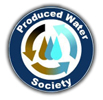The Situation
A California refinery produces xylene for use as commercial product and a precursor for petrochemical manufacturing. A primary component to the production of xylene is the isolation and purification of the chemical from a complex mixture of petroleum hydrocarbons. Steam based heat exchangers are used to process the xylene. Inherent to the design and rough duty heat exchangers face during their operation, leaks can and do develop. When a heat exchanger leaks, xylene contaminates the steam and produces a number of problems ranging from loss of final product, contamination and fouling of steam transfer piping, and ultimately bio-fouling of cooling towers. Consistent and reliable monitoring for xylene or other petroleum hydrocarbons in cooling water or steam condensate can alleviate product loss and process equipment down time.
The Problem
The refinery routinely uses gas chromatography (GC) analysis of grab samples to detect leaks in steam condensate. This traditional approach is highly prone to missing upsets, time consuming, and it carries the burden of recurring laboratory costs.
The continuous online measurement and detection of petroleum hydrocarbons in water has been challenging. The difficulty lies in the need to detect low concentrations of hydrocarbons that are dissolved in water.
The Solution
Optical instruments called fluorometers can very easily detect and measure dissolved petroleum hydrocarbons in water, and at very low concentrations. As shown in the study below, TD-4100 series monitors are able to measure xylene continuously over four consecutive weeks with a direct correlation coefficient of 0.9967 compared to GC grab sample analysis.
Continuous uninterrupted leak detection of steam condensate requires continuous monitoring. The refinery chose a Benchmark TD-4100 series monitor to meet their monitoring needs for this study. The TD-4100 was installed to detect leaks from the heat exchanger and to continuously monitor both dissolved and dispersed aromatic hydrocarbons in water—from ppb to ppm.
The TD-4100 was configured with a BTEX optical filter kit which permits the detection and measurement of mono-aromatic hydrocarbons in water. In particular, the filter kit can measure benzene, toluene, ethylbenzene and xylene, as well as phenol. The monitor provides continuous uninterrupted analysis of these chemicals in water. The TD-4100 was operated in the raw fluorescence mode, thereby functioning as an “upset” monitor. The monitor can be calibrated for direct reporting of ppb levels of xylene in the steam condensate. The TD-4100 served two functions at this facility: a leak detection tool to prompt mechanical repair of heat exchangers, and an economic tool to protect fouling of cooling towers and other downstream processes.




